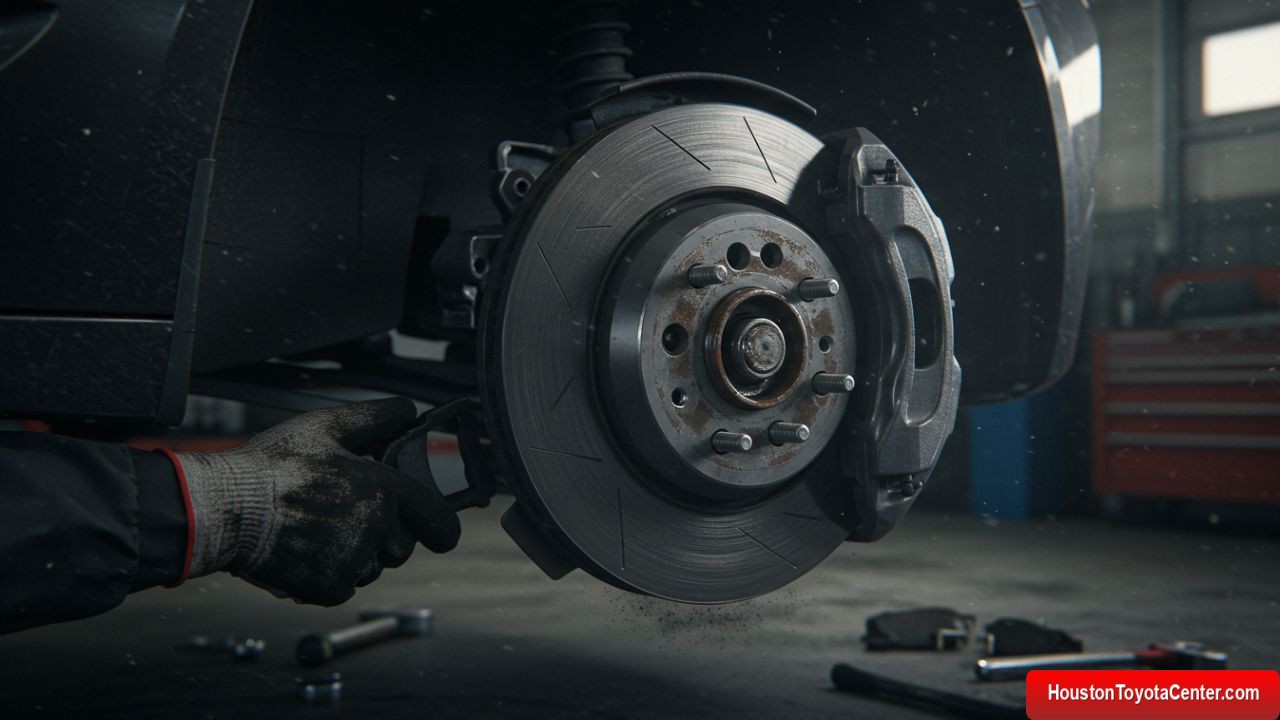Your car’s braking system is arguably the most crucial safety feature in your vehicle. It doesn’t just stop your car—it can save your life. At the heart of this system are your brake pads, and yet, many drivers ignore the signs that theirs are wearing thin. Whether you’re a DIY enthusiast or someone who prefers the expertise of a technician, understanding when and how to replace brake pads is essential for your safety and wallet.
In this in-depth guide, we’ll cover everything you need to know about brake pad replacement: from the warning signs to expect, to what the replacement process entails, and even how much it might cost.
🚨 Warning Signs You Need New Brake Pads
Brake pads wear out slowly over time, which can make it hard to notice when they need replacing. But ignoring the symptoms can lead to costly repairs—or worse, dangerous driving conditions. Look out for these common signs:
1. Squeaking or Squealing Noise
A high-pitched screeching sound when you apply the brakes is often the first indication. This is usually caused by a wear indicator—a small metal shim that gives you an audible alert that the pads are thin.
FREE: Quickly identify and understand problems with your vehicle 🚘
CLICK HERE2. Grinding Sound
If you hear a deep grinding noise, your brake pads may be completely worn out, and the metal parts of your brakes could be rubbing together. This can cause serious damage to the rotors and calipers.
3. Increased Stopping Distance
Notice your car taking longer to stop? This could mean your brake pads are too thin to provide adequate stopping power.
4. Vibrations While Braking
If your steering wheel or brake pedal shakes when you brake, it may indicate warped rotors—often caused by worn brake pads.
5. Brake Pad Indicator Light
Many modern cars have a warning light on the dashboard to alert you when your brake pads need replacement. Don’t ignore it!
6. Thin Brake Pads
You can visually inspect your brake pads through the wheel spokes. If they look thinner than 1/4 inch (6.4mm), it’s time for a replacement.
🔧 What Happens During a Brake Pad Replacement?
When you take your car to a professional shop or attempt a DIY replacement, here’s what typically happens during a standard brake pad replacement service:
Step-by-Step Process:
- Lift the Vehicle: The car is lifted using a hydraulic jack and supported with jack stands.
- Remove the Wheel: Lug nuts are unscrewed and the wheel is taken off.
- Unbolt the Caliper: The brake caliper is detached and carefully suspended to avoid strain on the brake line.
- Remove the Old Brake Pads: Worn pads are removed from the caliper bracket.
- Inspect the Rotor: The rotor is examined for damage or wear. If needed, it’s resurfaced or replaced.
- Install New Brake Pads: New pads are inserted and lubricated with anti-squeal compound or brake grease.
- Reassemble the Brake Components: The caliper is reattached and bolts are torqued.
- Repeat on Other Wheels: The same process is done for all wheels, typically the front or all four.
- Lower the Vehicle & Test Brakes: Once reassembled, the vehicle is lowered and the brakes are tested for functionality.
💸 Cost Breakdown: How Much Should You Expect to Pay?
Pricing for brake pad replacement can vary widely based on vehicle type, parts quality, and labor costs.
Here’s a helpful table to give you a rough idea:
| Service Type | Cost Per Axle (USD) |
|---|---|
| Basic Brake Pad Replacement | $100 – $250 |
| Premium Brake Pads | $200 – $350 |
| Brake Pads + Rotor Resurfacing | $250 – $400 |
| Brake Pads + Rotor Replacement | $300 – $600 |
| DIY Kit (Parts Only) | $50 – $150 |
💡 Tip: Always replace brake pads in pairs (front or rear) to maintain balanced braking.
🔍 Should You Replace Pads and Rotors Together?
This is a common question. Here’s a rule of thumb:
- Just pads: If the rotors are in good shape (no grooves, cracks, or warping), you may only need to replace the pads.
- Pads + rotors: If rotors are damaged or have reached the minimum thickness, replacing them is necessary.
Some mechanics suggest changing both to avoid additional labor costs down the road.
🧰 DIY vs. Professional Replacement
Thinking of replacing your brake pads yourself? Here’s what you should consider:
✅ Pros of DIY:
- Cost savings on labor.
- Good learning experience.
- You can choose your own quality parts.
❌ Cons of DIY:
- Requires tools like jack stands, a brake piston compressor, socket wrench, and torque wrench.
- You need to be confident in your mechanical ability—brakes are not a place to make mistakes.
- No labor warranty.
If you’re unsure, it’s best to leave it to a professional technician.
🕒 When Should Brake Pads Be Replaced?
On average, brake pads last between 30,000 to 70,000 miles, but this can vary depending on:
- Driving habits: Aggressive braking wears pads faster.
- Road conditions: City driving = more braking = faster wear.
- Pad material: Ceramic pads last longer than organic or semi-metallic.
Refer to your car’s owner’s manual for specific recommendations.
🔍 Different Types of Brake Pads
Understanding what kind of brake pad you’re using helps you make informed choices:
| Brake Pad Type | Pros | Cons |
|---|---|---|
| Organic | Quiet, inexpensive | Wears out quickly, more dust |
| Semi-metallic | Good heat resistance, affordable | Noisy, more rotor wear |
| Ceramic | Quiet, durable, clean | Expensive, less effective in cold |
| Low-metallic NAO | Good performance, cheaper | Dusty, noisy |
For everyday driving, ceramic pads are often the best mix of performance and comfort.
🛑 Don’t Ignore These Red Flags
Replacing brake pads isn’t just about performance—it’s about safety. Driving with worn pads can:
- Lead to brake failure
- Damage rotors and calipers
- Increase stopping distance
- Void your warranty or insurance claims in some cases
🌟 Tips to Extend Brake Pad Life
Want to get the most out of your brake pads? Follow these simple tips:
- Coast to a stop whenever possible instead of slamming the brakes.
- Avoid riding the brakes, especially downhill.
- Use engine braking in manual cars to reduce reliance on brakes.
- Don’t overload your vehicle, as extra weight increases braking force.
- Flush brake fluid regularly to keep your system healthy.
⚙️ Brake Pad Replacement FAQs
Q: How long does it take to replace brake pads?
A standard job takes about 1–2 hours for all four wheels.
Q: Can I drive with bad brake pads?
Only in an emergency—and even then, it’s risky. Schedule a replacement ASAP.
Q: What happens if I don’t replace them?
Ignoring worn pads can result in metal-on-metal damage, higher repair costs, and accidents.
Q: How do I choose the right pads for my car?
Refer to your vehicle’s manual or consult with a trusted mechanic.
🚗 Final Thoughts: Don’t Wait—Your Safety Depends On It
Brake pad replacement isn’t a luxury; it’s a necessity. Understanding the signs of wear and what to expect during the process can save you money, time, and possibly your life. Whether you choose to go the DIY route or trust a professional, staying ahead of the wear curve ensures every stop you make is a safe one.
So next time your car squeals or shudders when you hit the brakes, don’t brush it off—listen to what your vehicle is trying to tell you.


Leave a Reply